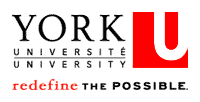Our world is ruled by gender. From the very first moment of birth when the declaration of sex is made, to the very end in either a women’s or men’s hospital ward, the way is set. Life may follow many paths and have numerous branches and side trips, but one thing is certain:, those who violate gender rules often marginalized, vilified, and yet frequently viewed with fascination. These gender outlaws form a group that has insights and experiences not generally available to most people. They live or have lived on both sides of the gender fence, and sometimes even move back and forth.
I intend to focus on three groups: early-declared transsexuals (those who demonstrate and announce their transsexuality in childhood), late-declared transsexuals (those who announce their transsexuality in adulthood) and crossdressers. Within each group we will find populations that are female born [FTM], and populations that are male born [MTF].
My goal it to explore and mine the experiences of and crossdressers with respect to changes in personal self-identity. The idea of “being a woman” or of “being a man” is linked to the concepts of masculinity and femininity. How do these concepts interact in the context of gender change? Clearly, one can be a masculine woman or a feminine man, but what information about gender can be garnered from this?
Goal: To what extent can a transgendered individual experience her/his personal identity as being formed by the outside world, and to what extent does changing social roles change the individual’s self-identity.
The difficulties facing gender outlaws come from all corners. Because we live in a legally bigender world, the limitations and restrictions on those who do not fit that model are mighty. The government and its institutions do their best to protect the existing order, which gives them greater control over the population, and facilitates the perpetuation of patriarchy, sexism and homophobia. The control includes making it hard to change one’s sex, the urinary segregation of public washrooms, the declaration of sex on public documents, court decisions penalizing members of the transgender [TG] community, and sometimes even protecting those who harm them.
People who cross gender boundaries, especially when they have lived substantial time in a birth-designated gender are in a unique position to assess and identify gender specific differences in social spaces. Therefore, another goal is:
Goal: The exploration of what we can learn about the dynamics of inter-gender communication, sexism, male prerogative, and unconscious gender assumptions from a group whose members have first lived within the confines and social milieu of the “opposite” gender.
The issues I seek to explore are both alive and important. The contentious issue of women only spaces, and where transgender folks fit in, is just one example of a difficult issue that needs examination. The questions I want to ask speak to real issues for real people, and the answers might have far reaching consequences. We stand to learn a lot by speaking to the people who live in the gender divide.
Please see the full overview for a comprehensive explanation of the project.



